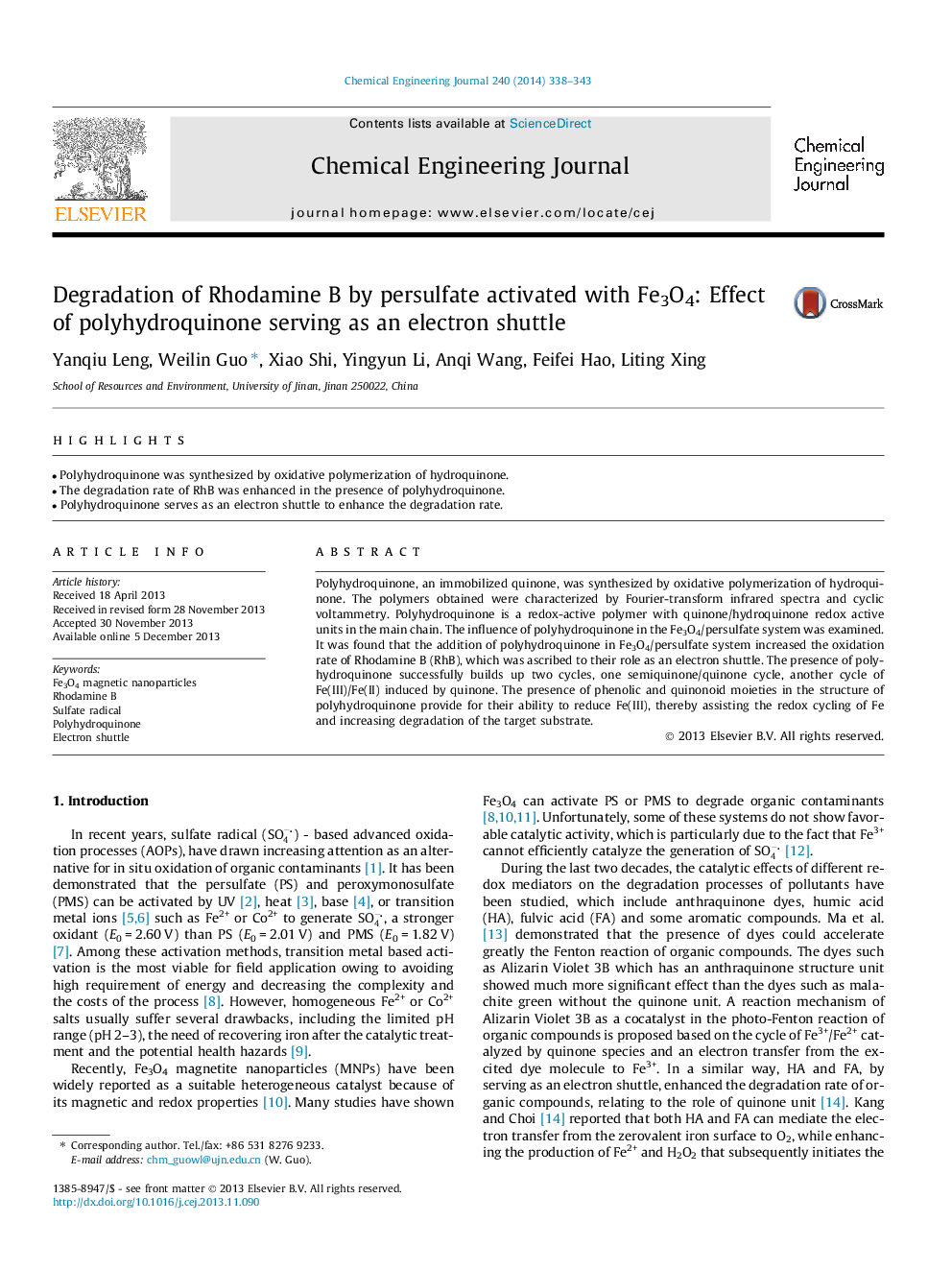| Article ID | Journal | Published Year | Pages | File Type |
|---|---|---|---|---|
| 147688 | Chemical Engineering Journal | 2014 | 6 Pages |
•Polyhydroquinone was synthesized by oxidative polymerization of hydroquinone.•The degradation rate of RhB was enhanced in the presence of polyhydroquinone.•Polyhydroquinone serves as an electron shuttle to enhance the degradation rate.
Polyhydroquinone, an immobilized quinone, was synthesized by oxidative polymerization of hydroquinone. The polymers obtained were characterized by Fourier-transform infrared spectra and cyclic voltammetry. Polyhydroquinone is a redox-active polymer with quinone/hydroquinone redox active units in the main chain. The influence of polyhydroquinone in the Fe3O4/persulfate system was examined. It was found that the addition of polyhydroquinone in Fe3O4/persulfate system increased the oxidation rate of Rhodamine B (RhB), which was ascribed to their role as an electron shuttle. The presence of polyhydroquinone successfully builds up two cycles, one semiquinone/quinone cycle, another cycle of Fe(III)/Fe(II) induced by quinone. The presence of phenolic and quinonoid moieties in the structure of polyhydroquinone provide for their ability to reduce Fe(III), thereby assisting the redox cycling of Fe and increasing degradation of the target substrate.
